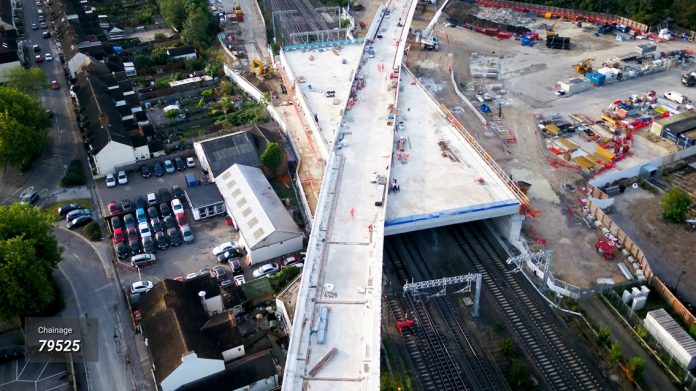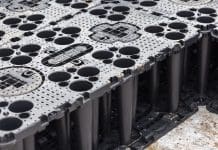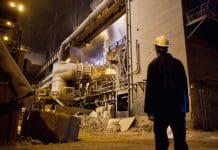Engineers have saved £70m of taxpayer money, by using innovative construction methods to build a box structure flyover of the East West Rail project
Network Rail and the East West Rail Alliance are restoring the Oxford-to-Cambridge line by removing and replacing a flyover which crosses the busy West Coast main line at Bletchley.
The demolition project on the old structure took place throughout 2020 and involved some of the UK’s largest cranes.
The new structure, situated on the Bicester and Bletchley line, is being built to last up to 120 years with minimal future maintenance required.
Instead of replacing the old 1960’s concrete flyover with an exact replica, which would involve closing the West Coast mainline below to build five supporting columns in between the tracks, East West Rail project engineers have used modern methods of construction to build a protective ‘box structure.’
The box structure acts very much like a rectangular railway tunnel, removing the need for separate supporting columns and providing a platform for the flyover to sit on.
This means the West Coast mainline – one of the busiest mixed-use passenger and freight railway routes in Europe – doesn’t have to be closed during the flyover replacement taking place above as the box structure provides a protective, physical barrier.
The barrier will ensure that the workforce and trains moving below are safe.
‘Reducing onsite workforce’
Mark Cuzner, East West Rail Alliance project director, said: “By working smarter we’ve been able to speed-up the project by around six months.
‘At the start of the project, we built a protective wall next to the West Coast main line so we could safely build the box structure during the day when the railway is open, instead of working piecemeal at night-time when the railway is closed.
“Most of the components for both the box structure, and the flyover, arrived pre-built and were simply assembled on site, like a model kit or set of Duplo bricks.
“The simplicity of construction meant we could safely reduce the workforce onsite by 60%, cut the previously-forecast cost by £70m and get the job done six months quicker than planned.”














